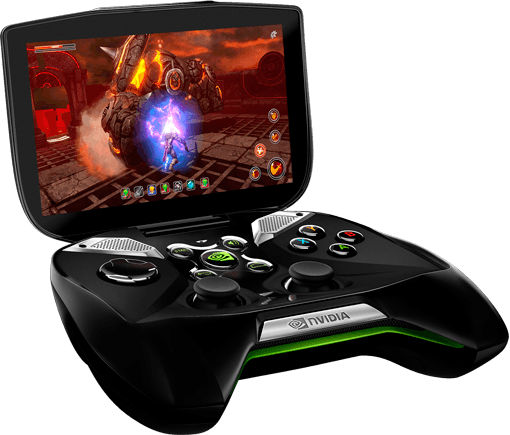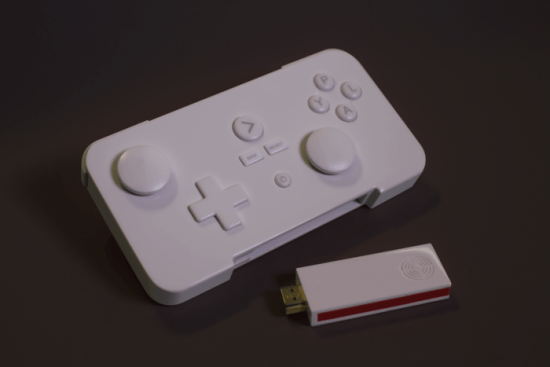- Wondering how to get Monopoly GO! free rolls? Well, you’ve come to the right place. In this guide, we provide you with a bunch of tips and tricks to get some free rolls for the hit new mobile game. We’ll …
Best Roblox Horror Games to Play Right Now – Updated Weekly
By Adele Wilson
Our Best Roblox Horror Games guide features the scariest and most creative experiences to play right now on the platform!The BEST Roblox Games of The Week – Games You Need To Play!
By Sho Roberts
Our feature shares our pick for the Best Roblox Games of the week! With our feature, we guarantee you'll find something new to play!Type Soul Clan Rarity Guide – All Legendary And Common Clans Listed!
By Nathan Ball
Wondering what your odds of rolling a particular Clan are? Wonder no more, with my handy Type Soul Clan Rarity guide.
What Games Are’s Tadhg Kelly talks microconsoles [interview]
The OUYA’s Kickstarter campaign hit its lofty $950,000 goal in only eight hours. The Gamestick, a competitor to the OUYA, had no trouble reaching its goal, either. Not long after, both Valve and Nvidia announced they would be releasing devices that simplified the process of playing PC games on a TV. Change is coming soon to the console market, and based on everything mentioned above, it’s clear microconsoles will be leading the charge. To learn more about what we as consumers can expect in the months and years ahead, we reached out to Tadhg Kelly, author of the What Games Are blog and creative director at Jawfish Games.

The OUYA’s Kickstarter campaign hit its lofty $950,000 goal in only eight hours. The Gamestick, a competitor to the OUYA, had no trouble reaching its goal, either. Not long after, both Valve and Nvidia announced they would be releasing devices that simplified the process of playing PC games on a TV. Change is coming soon to the console market, and based on everything mentioned above, it’s clear microconsoles will be leading the charge. To learn more about what we as consumers can expect in the months and years ahead, we reached out to Tadhg Kelly, author of the What Games Are blog and creative director at Jawfish Games.
We first learned about Kelly from his excellent post on microconsoles, but have since spent a significant chunk of time reading more of his work. Suffice to say, the man knows his stuff. We recommend giving his blog a click or twenty, but only after reading this interview. Don’t you be bailing on us early, now.
Gamezebo: If microconsoles take the place of traditional consoles, what effect do you think it will have on major publishers like EA and Ubisoft?
Tadhg: Devastating – if they’re not ready for it. EA has already made significant inroads to app publishing on mobile and other devices, adapting itself to the new environment. Not all publishers have managed to do this though (see: THQ), and are increasingly finding themselves playing a high stakes game of chicken.
G: Had the next PlayStation and Xbox already launched, do you think the Ouya and other microconsoles would still be in a position to succeed?
T: I think they would have had more difficulty in attaining press coverage, but I don’t know that it would have impacted them that much. The significant factor in kicking off the microconsole phenomenon has been the Kickstarter effect and how much of a revelation that has been. Kickstarter is a space that awards skunkworks-style scrappy projects way more than official efforts (at least, for now) and this gives the projects that rise on it considerable street credibility.
Nvidia’s Project Shield
G: Do you foresee Sony, Microsoft, and Nintendo trying to compete with microconsoles in any meaningful way? Launching their own, perhaps?
T: Not yet. The problem with these titans is that they have so much vested in success that looks a certain way, which is big-budget box office games, media and so on. They are utterly focused on trying to achieve large margins on the games themselves, which means hype cycle, premium offerings and media blitzes. That’s a lot of sunk costs and a lot of people hired to do that kind of job, but those people are not necessarily needed in an app universe.
The app universe is completely different, more browsing-oriented and smaller in terms of cost to the customer. It’s more like television than movies, in that the overall volume of content from many producers matters and attention is better aggregated than directed. Console makers have thus far shown themselves unable or unwilling to think that way, preferring to sell fewer digital games at high prices than many games at lower prices. Perhaps they believe that lower prices would devalue the illusion of their platform, and perhaps they are right, but if so then the argument is that Steam already exists and has made that argument to customers already.
Is Microsoft ready to come out of its ivory tower and sell Halo for 99 cents? That’s where they need to be to work in the microconsole universe.
If size matters, the Gamestick is set. It’s easily the smallest of all the current microconsoles.
G: Do you worry about too many Android-based consoles coming out too soon and fragmenting the market?
T: If anything I think the idea that consoles may evolve to an interoperable standard is very exciting. This is a state of affairs that we already have with browsers, PCs, mobile phones to an extent and across all other media. Only in console games have these vertical mentalities endured, and they the primary reason why consoles feel so stuck in the past compared to what we see happening all around them.
G: What do you think is the biggest hurdle microconsoles will have to overcome in order to succeed?
T: Many people think that the big issue for microconsoles is gaining mainstream success, but with cheaper hardware and digital distribution it’s not necessary to be in every living room. A subset will do as long as it leads to a thriving ecosystem, as that lays the ground for multiple iterations of the hardware into ever-increasing success.
In the console universe every machine is treated like a new Ferrari, released every few years and needs to sell through for a long time to make its billions back and then some. In microconsole, why does that have to be the case? Why can’t we have a new Ouya every year, much as we have a new iPhone every year?
So the real challenge is finding passionate cores of fans who buy into that story. For Ouya or Gamestick or Steamboxes to work they really need to get the zealous fans on side, the ones who evangelize microconsoles as The Future, and so build momentum. They’ll win by being tribal rather than mainstream.
More articles...
Monopoly GO! Free Rolls – Links For Free Dice
By Glen Fox
Wondering how to get Monopoly GO! free rolls? Well, you’ve come to the right place. In this guide, we provide you with a bunch of tips and tricks to get some free rolls for the hit new mobile game. We’ll …Best Roblox Horror Games to Play Right Now – Updated Weekly
By Adele Wilson
Our Best Roblox Horror Games guide features the scariest and most creative experiences to play right now on the platform!The BEST Roblox Games of The Week – Games You Need To Play!
By Sho Roberts
Our feature shares our pick for the Best Roblox Games of the week! With our feature, we guarantee you'll find something new to play!Type Soul Clan Rarity Guide – All Legendary And Common Clans Listed!
By Nathan Ball
Wondering what your odds of rolling a particular Clan are? Wonder no more, with my handy Type Soul Clan Rarity guide.








 “
“